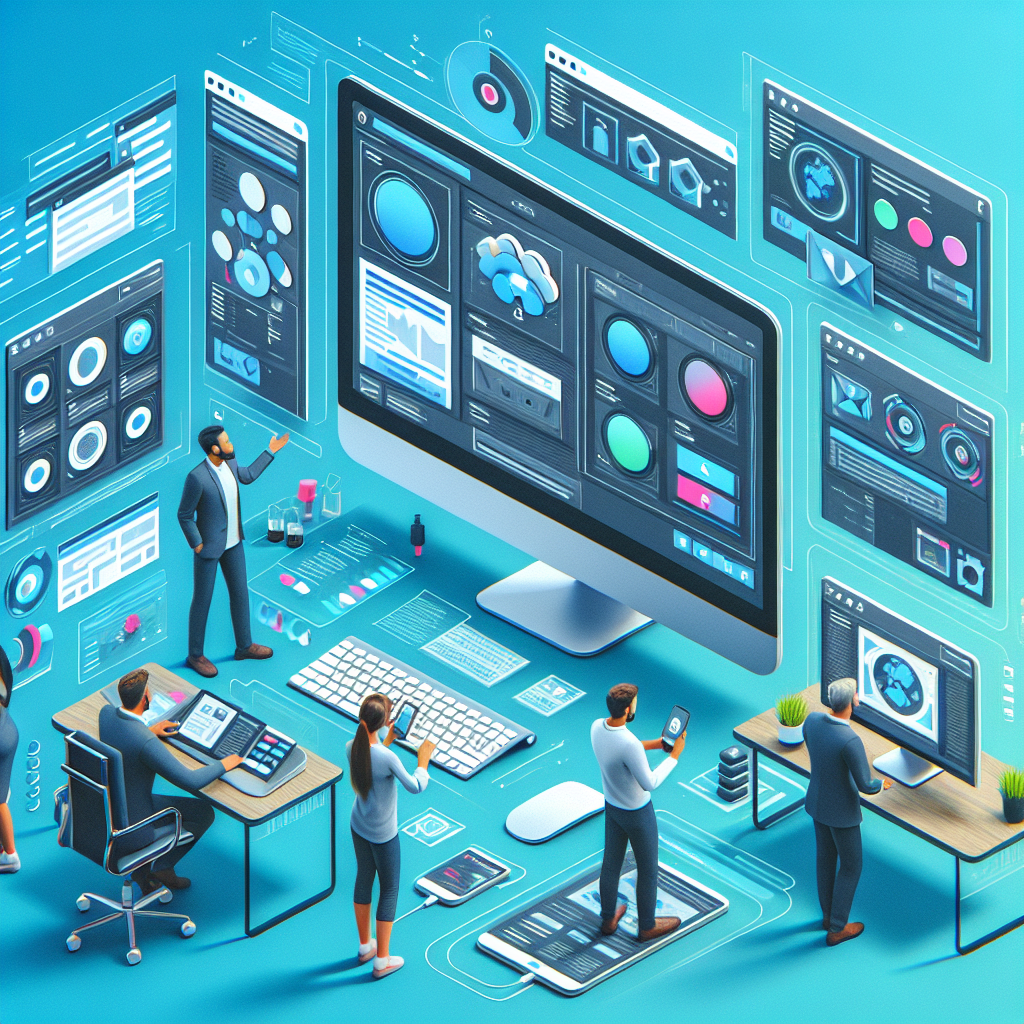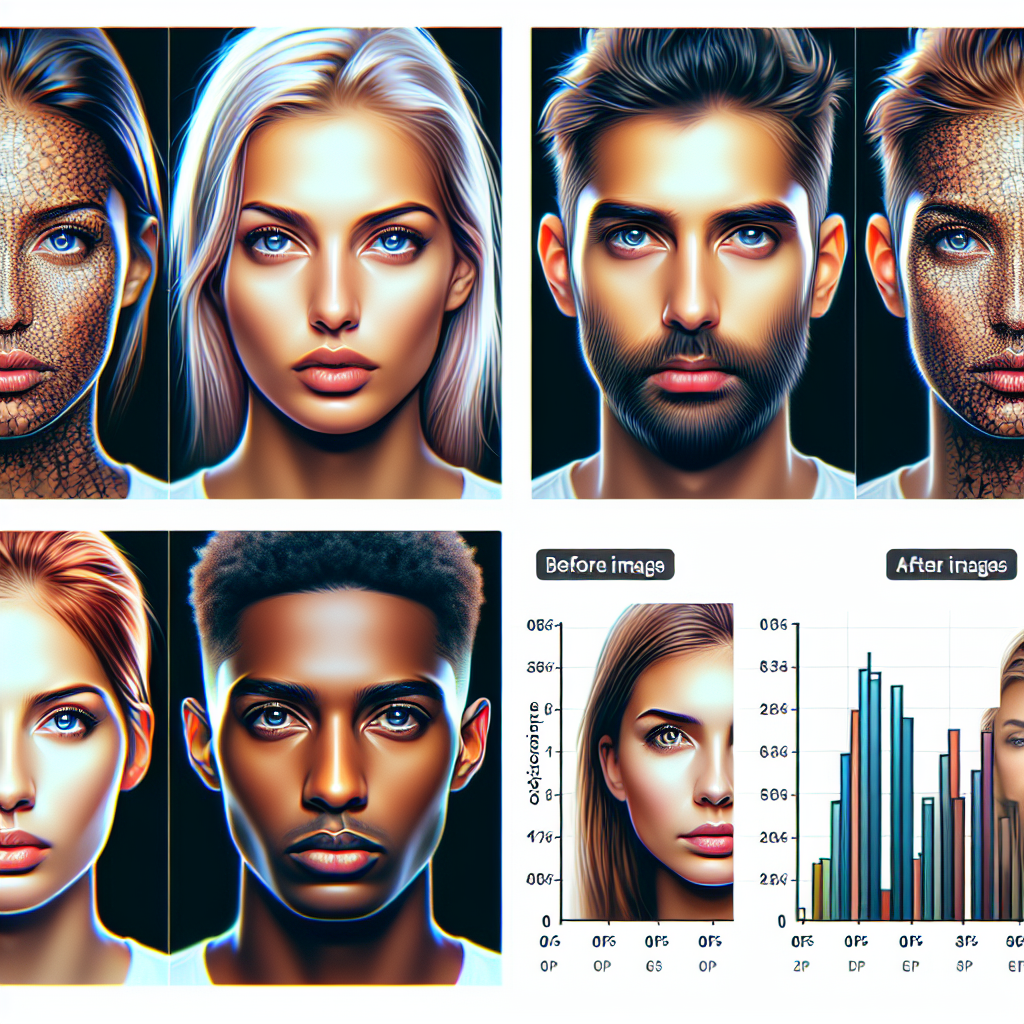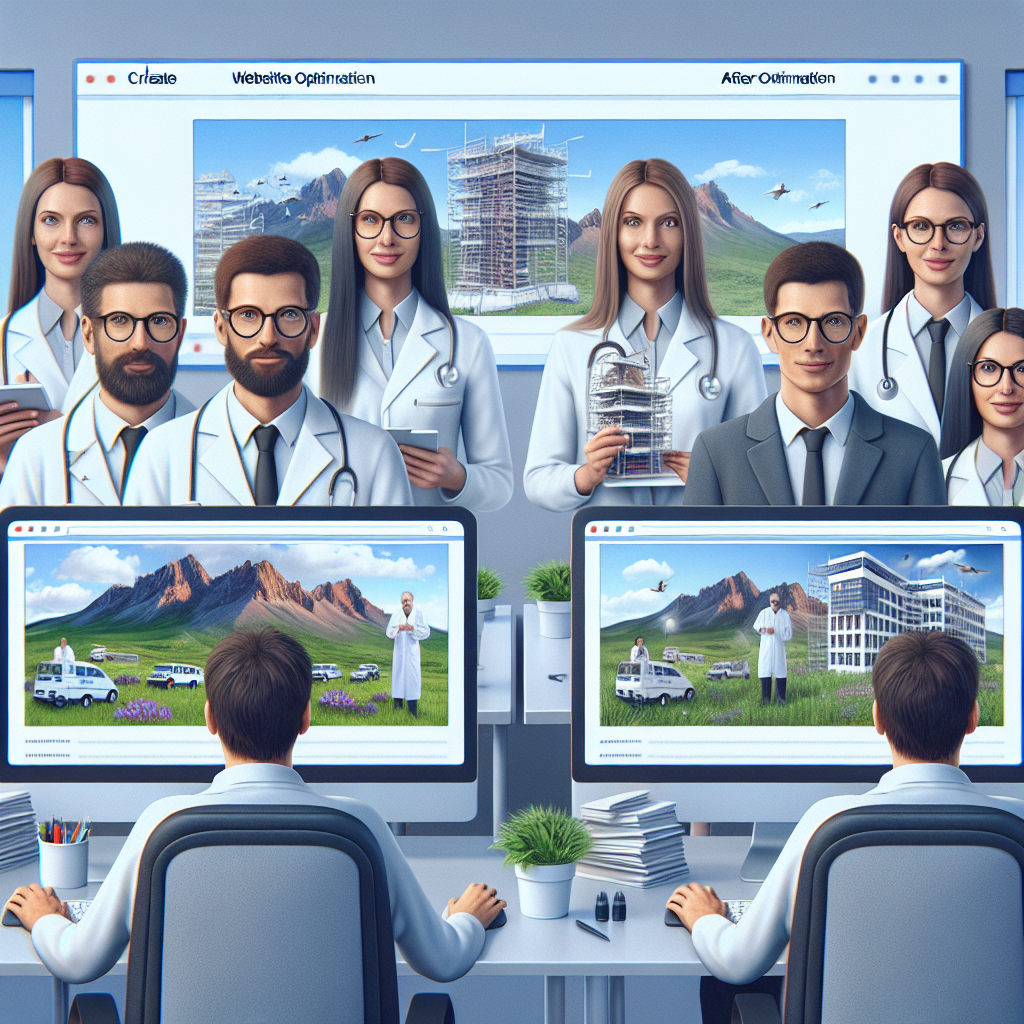Unlock the Best Image Optimization Services for Websites: Discover What Image Formats Work Best for the Internet!

Why Invest in Image Optimization for Websites to Boost Your Online Presence?

Are you struggling to grab the attention of your visitors? ⭐ Have you ever thought that your images might be the culprit? With image optimization for websites, you can significantly enhance user experience and improve your search engine rankings! ⭐ Lets dive into why this service is a game-changer for your online presence.
Statistics That Matter
Did you know that websites can lose up to 70% of their visitors due to slow load times? ⭐♂️ Fast-loading pages keep users engaged and encourage them to explore more. Additionally, 53% of mobile users abandon sites that take longer than three seconds to load. ⚡ This means you could be missing out on potential customers just because your images aren’t optimized.
How Image Optimization Transforms Your Site
What does image optimization for the internet involve? Its about resizing, compressing, and selecting the right file formats to ensure your images load quickly without sacrificing quality. Imagine this: a restaurant website uses unoptimized high-resolution images that take forever to load. A potential customer visits the site, feels frustrated, and leaves. Meanwhile, a competitor with optimized images captures their attention and a new customer is lost. Don’t let this happen to you! ⭐
The Cost Benefits
When you order image optimization on the website, youre actually investing in the long-term success of your business. For just €250, you could have your images optimized, resulting in faster loading times and better ranking on search engines. ⭐ Take a look at the benefits of investing in this service:
- ✨ Enhanced User Experience
- ⭐ Improved SEO Rankings
- ⭐ Increased Conversion Rates
- ⭐ Higher Visibility on Mobile Devices
Choosing the Right Format
So, what image format is best for a website? The answer depends on the images you use. Here are some quick guidelines:
| Image Format | Best For | Pros | Cons |
| JPEG | Photography | Great quality and small file size | Not suitable for transparent backgrounds |
| PNG | Logos and Graphics | Supports transparency and high quality | Larger file size |
| GIF | Animations | Great for short animations | Limited color palette |
| WEBP | Web Graphics | High quality and small file size | Not universally supported |
By understanding and implementing the right formats, you can prevent any unnecessary slowdowns on your website!
Real-Life Success Stories
Take the story of a local bakery, "Sweet Treats," that struggled to attract customers online. Their website was slow, and customers often complained about the loading times. After they invested in our image optimization for websites, things changed. ⭐ Not only did their page load time improve to under two seconds, but they also reported a 40% increase in online orders within a month! Thats the power of optimized images!
Expert Advice
Our professional specialists at Artivale have over 20 years of experience in the field, and we understand that in the fast-paced digital world, speed matters. It’s vital to regularly review your websites performance. This includes updating images and ensuring they are optimized. If you ever notice a spike in bounce rates, it might be time for another round of optimization. Remember, a well-optimized website means more happy customers! ⭐
Ready to take your website to the next level with image optimization for websites? Dont wait any longer! Call Alexandra at [email protected] or visit artivale.com to discuss how we can help enhance your online presence today!
Frequently Asked Questions
- What is image optimization? It involves resizing, compressing, and choosing the right formats for images to improve load times.
- Why is image optimization important? Optimized images enhance user experience and boost SEO performance.
- How can I optimize my images? Use tools to compress images and choose suitable formats based on your needs.
- What does image optimization cost? Services start around €250 based on the scope of work.
- Can optimized images improve my ranking on Google? Yes, faster sites tend to rank better in search results.
- What image format should I use for my website? JPEG for photos, PNG for graphics, and WEBP for optimal performance.
- How does image optimization affect mobile users? Mobile users benefit greatly from optimized images as they load faster.
- How often should I optimize images on my site? Regularly, especially after updates or if users experience slow loading times.
- Is there a tool for image optimization? Yes, several online tools and software can help you optimize your images effectively.
- Can I handle image optimization myself? Yes, but professional services ensure comprehensive optimization tailored to your site’s needs.
What Does Image Optimization for the Internet Involve and How Can It Transform Your Site?

Have you ever wondered how some websites manage to load in the blink of an eye while others feel like they’re moving through molasses? ⭐ The secret often lies in image optimization for the internet. If your website is lagging behind due to heavy images, it’s time to understand why optimizing your visuals is crucial for both performance and user experience! ⭐
The Essentials of Image Optimization
So, what exactly does image optimization involve? In simple terms, it’s the process of making sure your images are perfectly suited for the web by minimizing their size without sacrificing quality. Let’s break it down into a few key components:
- ⭐ Choosing the Right Format: Selecting the best image format can make a huge difference. JPEG is great for photos, PNG works wonders for images needing transparency, and GIFs are perfect for simple animations.
- ⭐ Compression: This reduces the file size of your images without affecting their visual quality, which helps improve load times.
- ⭐ Resizing: Adjusting the dimensions of your images ensures they fit seamlessly on your web pages and don’t take up unnecessary bandwidth.
- ⭐ Alt Text: Adding descriptive alt text not only helps with SEO but also improves accessibility for users with visual impairments.
Transforming Your Online Presence
Image optimization does more than just speed up your website; it can absolutely transform your online presence. Here’s how:
1. Improved User Experience
Visitors are likely to leave a site if it takes too long to load. According to a study, 40% of users abandon websites that take more than three seconds to load! ⏳ When you optimize your images and improve loading times, you’re keeping users engaged. A well-optimized website creates a smoother journey, resulting in lower bounce rates and higher chances to convert visitors into customers.
2. Enhanced SEO Rankings
Search engines like Google favor fast-loading sites. By implementing image optimization for the internet, you’re not just enhancing user experience; you’re also giving your website a better chance of ranking higher in search results. Every second counts when it comes to SEO, and optimized images can help boost visibility, ensuring potential customers find you more easily! ⭐
3. Increased Conversion Rates
Did you know that a faster website can increase conversion rates significantly? For example, an e-commerce platform optimized its images and reported a 30% rise in sales! ⭐️ By making it easy for customers to browse and purchase, you take one step closer to fulfilling your business goals. Imagine what a few quick tweaks to your images can mean for your bottom line!
A Real-Life Example
Let’s talk about a fictional online boutique called "Fashion Forward." When they first launched, their website boasted stunning images but took ages to load. After investing in our image optimization for websites, they saw a remarkable turnaround. Load times dropped from eight seconds to just two, leading to 50% less cart abandonment! Customers loved the seamless experience, and sales soared. ⭐
Expert Tips for Image Optimization
Our professional specialists at Artivale bring over 20 years of experience in enhancing websites through proper image management. Here are some expert tips you can follow:
- ⚙️ Use tools like TinyPNG or ImageOptim for easy image compression.
- ⭐️ Regularly audit your images to ensure they remain optimized and relevant.
- ⭐ Consider using modern formats like WEBP for better optimization without loss of quality.
- ⭐ Always keep backup copies of your original images before optimizing.
So why wait? With us at Artivale, you can easily transform your site by utilizing image optimization for the internet. Ready to elevate your websites performance? Get in touch with Alexandra at [email protected] or visit us at artivale.com to discuss how we can help!
Frequently Asked Questions
- What is image optimization? It is the process of adjusting images to make them suitable for the web by reducing size and enhancing performance.
- Why is image optimization important? It significantly speeds up website load times and improves user experience, which can lead to better SEO rankings.
- Which formats are best for images on my website? JPEG for photos, PNG for high-quality graphics, and WEBP for optimal performance.
- Can image optimization affect my websites traffic? Yes, better-performing sites attract more visitors and improve search engine visibility.
- How can I implement image optimization myself? Use online tools for compression and ensure to select the right formats for your images.
- What tools can aid in image optimization? Tools like TinyPNG, ImageOptim, and Adobe Photoshop can help you optimize images effectively.
- How often should I update my images? It’s good practice to review and update images periodically, especially after adding new products or content.
- Is image optimization a time-consuming process? With the right tools, image optimization can be quick and efficient.
- Can I outsource image optimization? Yes, many companies specialize in this service to help enhance your website.
- What can I do if my images still take too long to load? Consider further compression, resizing, or even removing unnecessary visuals.
What Image Format is Best for a Website? Discover the Secrets to Perfecting Your Visuals

When it comes to your website, visuals play a crucial role in captivating your audience and delivering your message. But are you using the right image formats? ⭐ Understanding what image format is best for a website can make all the difference in loading speed, quality, and user engagement. Let’s dive into the secrets of perfecting your visuals! ⭐
The Major Image Formats Explained
Different image formats serve different purposes. Heres a straightforward breakdown to help you make informed choices:
| Image Format | Use Case | Pros | Cons |
| JPEG | Photographs and complex images | Small file size, 16 million colors | Lossy compression - quality can decrease |
| PNG | Images requiring transparency or sharp edges | High-quality images without loss; supports transparency | Larger file sizes compared to JPEG |
| GIF | Simple animations | Supports animation; great for low-resolution graphics | Limited to 256 colors |
| WEBP | Web graphics | Superior compression, can provide smaller file sizes | Not all browsers support it yet |
| SVG | Logos and simple graphics | Scalable with no loss of quality | Can be complex for intricate designs |
Choosing the right format can drastically affect your website’s performance, so keep these formats in mind when uploading images!
When to Use Each Format
To make it easier for you, here are detailed scenarios for using each format:
- ⭐ Use JPEG: Ideal for landscape photographs or any image with complex colors. The smaller file size will help your page load faster!
- ⭐ Use PNG: Best for images that need to maintain high quality or require transparency, like logos and icons. However, be mindful of the file size.
- ⭐ Use GIF: Perfect for short animations or simple graphics. Great for adding a bit of playfulness to your site, but remember the color limitations.
- ⭐ Use WEBP: If youre looking to optimize load times without compromising quality, this modern format is your best friend. Just ensure compatibility with your audiences browsers!
- ⭐ Use SVG: When it comes to logos or web icons that need to be displayed in various sizes without losing quality, SVG is unbeatable.
The Impact of Choosing the Right Format
Have you ever waited agonizingly for a webpage to load, only to find it takes forever because of high-resolution images? ⭐ Poorly optimized images can blow your loading times and affect your bounce rates. For example, an online art gallery chose JPEGs for their paintings. While the images were stunning, they were also bulky. After switching to WEBP, they noticed a 50% drop in load time and a significant increase in user engagement and sales! ⭐
Expert Recommendations
At Artivale, our professional specialists understand that using the right image formats can significantly enhance your overall website performance. Here are some quick tips:
- ⭐ Regularly check the dimensions of your images before uploading to ensure they fit in your website layout.
- ⭐ Always compress your images where possible to balance quality and file size.
- ⭐ Keep an eye on the performance; adjusting your image choices based on analytics can make a huge difference!
- ⭐ Consider using responsive images (with the
srcsetattribute) so that the right image format is served based on the users device.
Getting Started with Image Optimization
Don’t let the technicalities overwhelm you! Implementing what image format is best for a website is just one piece of the puzzle in image optimization. Contact us at Artivale to assist with tailoring your images for perfect performance. Call Alexandra at [email protected] or visit our site at artivale.com to discuss how we can elevate your visual content today! ⭐✨
Frequently Asked Questions
- What is the best image format for a website? It depends on the context: JPEG for photos, PNG for graphics needing transparency, WEBP for optimal performance, and SVG for logos.
- How can image format affect my website’s speed? Larger file sizes can slow down loading times. Choosing the right format ensures faster load times.
- Are all formats supported by every browser? No, for example, WEBP is not supported by all older browsers, so be mindful of your audience.
- How can I convert images to different formats? You can use image editing software or online tools for format conversion easily.
- Should I always choose high-resolution images? Only if necessary. Often, smaller images that load quickly improve user experience more than high-resolution pictures.
-
How do I create responsive images? Use the
srcsetattribute in the image tag to serve different versions based on screen size. - What is the trade-off between image quality and file size? Compressing images reduces quality but significantly improves load times. Find a good balance!
- Can SVGs replace PNGs or JPEGs entirely? Not for every use case, but they are fantastic for logos and simple graphics. Each format serves its purpose.
- How often should I update my images? Periodically, especially when launching new content or noticing performance issues.
- Are there tools to help me optimize images? Yes, tools like TinyPNG, ImageOptim, and Photoshop are great for compression and conversion.
Submit your details in the form and our team will personally get in touch with you within the next business day to discuss your needs
